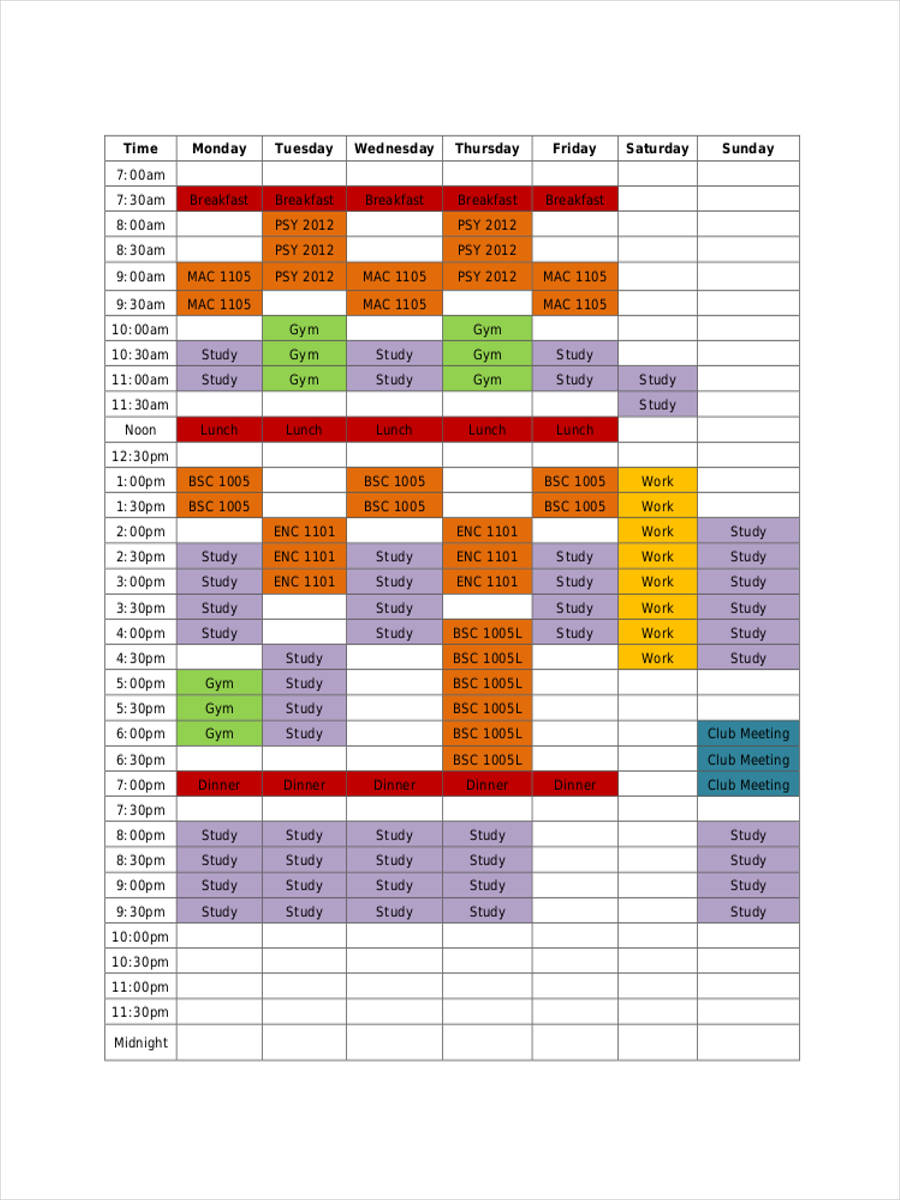As a student, managing your schedule is crucial for academic success. A well-structured and organized student schedule can help you stay on track, prioritize tasks, and make the most of your time.
In this guide, we will explore the importance of a student schedule, how to create and manage one effectively, and provide tips and examples to help you optimize your study routine.
Why is a Student Schedule Important?
A student schedule is a tool that helps you plan and allocate your time effectively. It provides a clear roadmap for your daily, weekly, and monthly activities, ensuring that you have enough time for studying, attending classes, completing assignments, and engaging in extracurricular activities. Here are some key reasons why having a student schedule is important:
- Time Management: A schedule helps you manage your time efficiently by dividing it into blocks for different activities. This prevents procrastination and ensures that you allocate enough time for each task.
- Organization: With a schedule, you have a centralized place to keep track of all your commitments, deadlines, and important dates. It helps you stay organized and reduces the chances of missing any deadlines or appointments.
- Prioritization: By creating a schedule, you can prioritize your tasks based on their importance and urgency. This allows you to focus on high-priority tasks first and ensures that you don’t get overwhelmed by a large workload.
- Balance: A well-designed schedule ensures that you have a balance between your academic, personal, and social life. It helps you allocate time for self-care, relaxation, and socializing, which are essential for overall well-being.
How to Create an Effective Student Schedule
Creating an effective student schedule requires careful planning and consideration of your personal preferences and study habits. Here are some steps to help you create a schedule that works for you:
1. Assess Your Priorities and Goals
Start by identifying your priorities and goals for the semester or academic year. What are the most important tasks or activities you need to focus on? Are there any specific academic or personal goals you want to achieve? Understanding your priorities will help you allocate time accordingly in your schedule.
2. Determine Your Available Time
Next, assess your available time by considering your class schedule, extracurricular activities, and personal commitments. Determine the blocks of time you have each day or week that can be dedicated to studying and completing assignments. Be realistic about your available time and avoid overcommitting.
3. Break Down Your Tasks
Break down your tasks into smaller, manageable chunks. For example, instead of scheduling “study for a biology exam,” break it down into smaller tasks like “read chapter 1,” “review lecture notes,” and “complete practice questions.” This will help you allocate time more effectively and avoid feeling overwhelmed by large tasks.
4. Allocate Time for Each Task
Allocate specific time slots in your schedule for each task. Consider your personal preferences and study habits. Some students may prefer to study in shorter, focused sessions, while others may work better with longer study blocks. Experiment with different time allocations to find what works best for you.
5. Include Breaks and Downtime
Don’t forget to include breaks and downtime in your schedule. Taking regular breaks helps improve focus and productivity. It’s important to give yourself time to relax, recharge, and engage in activities that you enjoy. This will prevent burnout and keep you motivated.
6. Be Flexible
Remember that a schedule is a guide, not a rigid set of rules. Be flexible and allow room for adjustments. Unexpected events or changes in priorities may require you to modify your schedule. Embrace flexibility and adaptability to ensure your schedule remains effective and manageable.
7. Review and Revise Regularly
Regularly review and revise your schedule to ensure it is still serving your needs. Assess your progress, evaluate what’s working and what isn’t, and make necessary adjustments. A schedule is a dynamic tool that should evolve with your changing needs and priorities.
Example of a Student Schedule
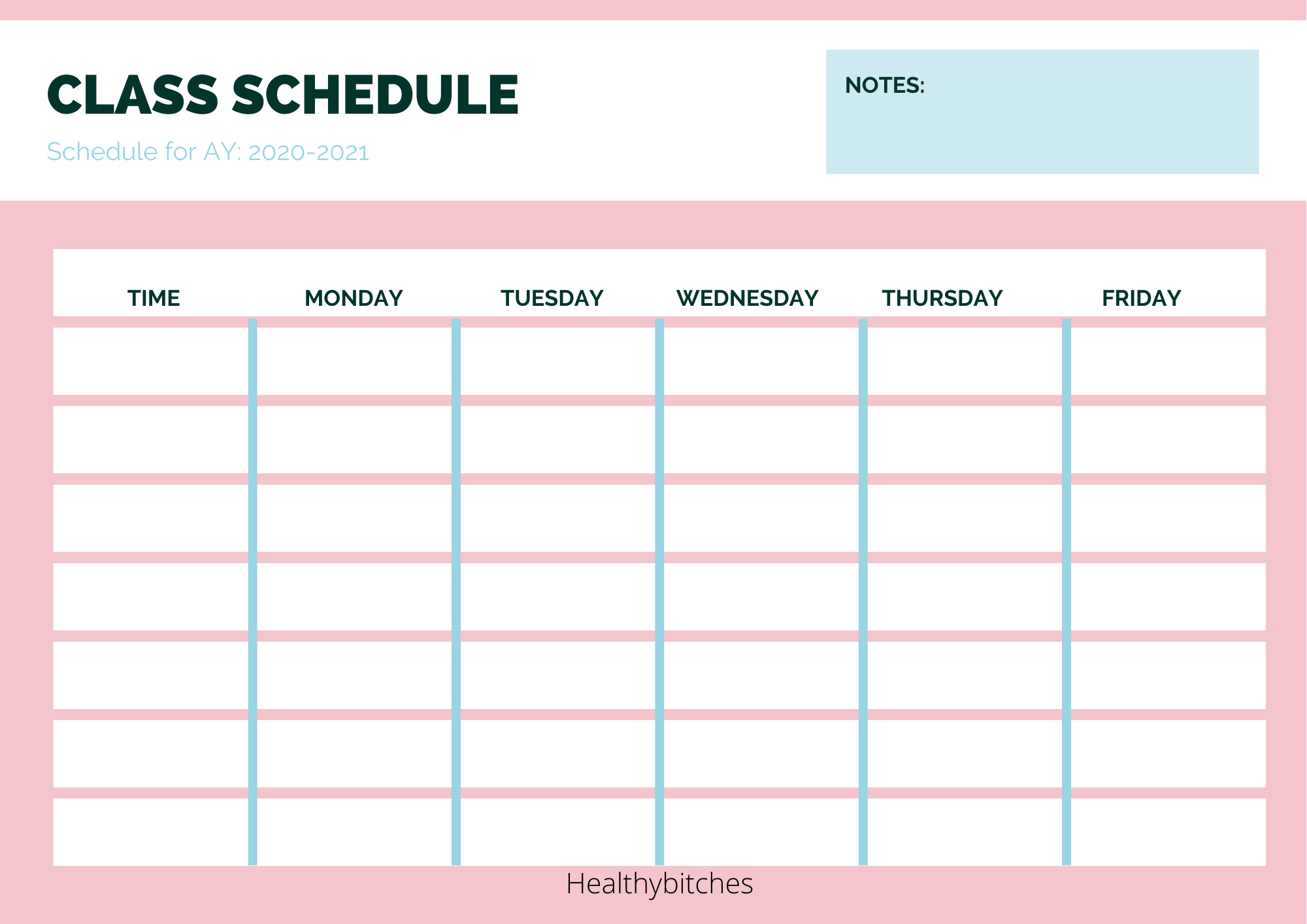
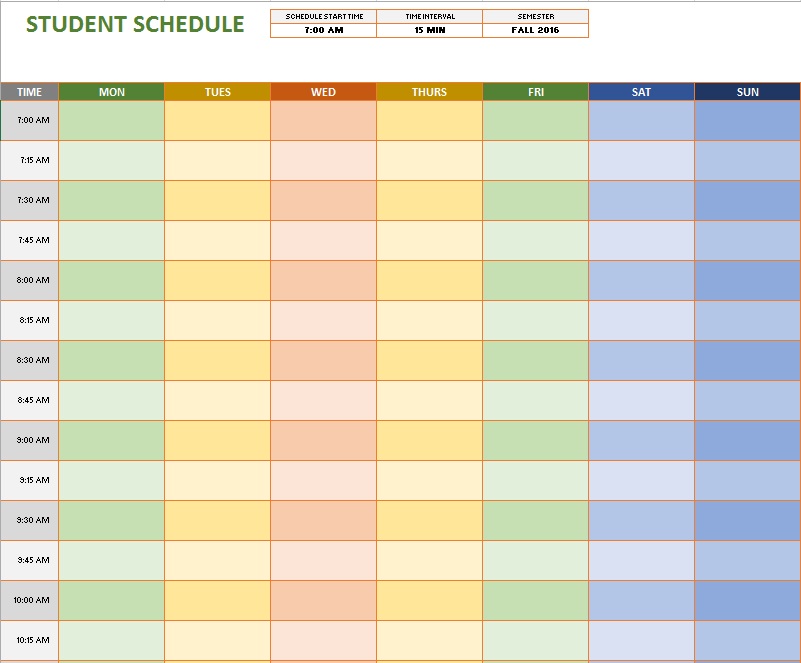
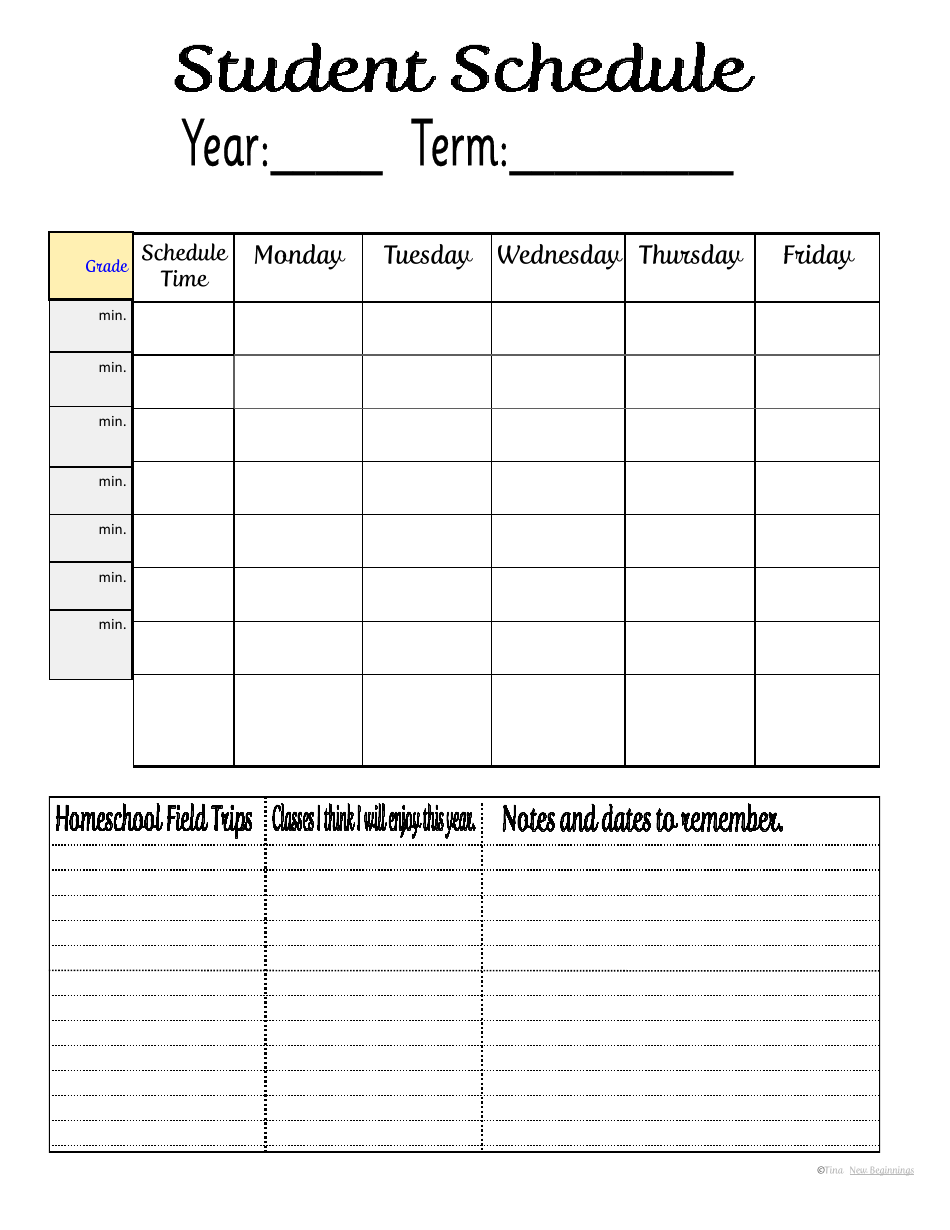
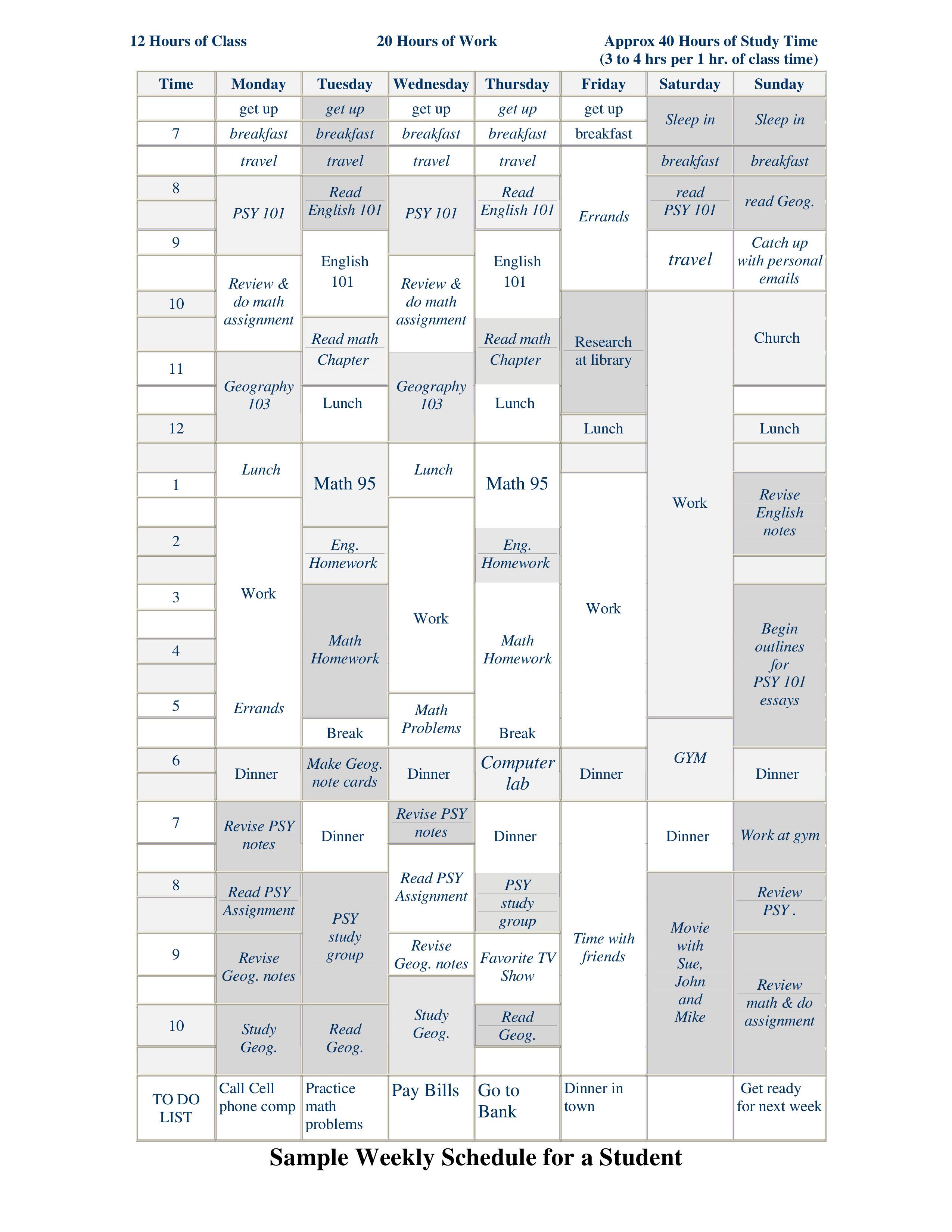
To provide you with a visual example, here’s a sample student schedule for a typical weekday:
- 8:00 AM – 9:00 AM: Morning Routine and Breakfast
- 9:00 AM – 11:00 AM: Attend Classes
- 11:00 AM – 12:00 PM: Study for Biology Exam
- 12:00 PM – 1:00 PM: Lunch Break
- 1:00 PM – 3:00 PM: Complete Math Assignment
- 3:00 PM – 3:30 PM: Break and Snack
- 3:30 PM – 5:30 PM: Attend Club Meeting
- 5:30 PM – 7:00 PM: Free Time for Relaxation
- 7:00 PM – 8:30 PM: Study for English Literature Exam
- 8:30 PM – 9:30 PM: Dinner Break
- 9:30 PM – 10:30 PM: Review Lecture Notes
- 10:30 PM – 11:00 PM: Wind Down and Prepare for Bed
Tips for Managing Your Student Schedule
Here are some additional tips to help you effectively manage your student schedule:
- Set Realistic Goals: Be realistic about what you can accomplish within a given time frame. Avoid overloading your schedule with too many tasks and commitments.
- Use Technology: Consider using digital tools or apps to create and manage your schedule. There are numerous scheduling apps available that can help you stay organized and send reminders for upcoming tasks.
- Prioritize Self-Care: Make sure to allocate time for self-care activities such as exercise, meditation, or hobbies. Taking care of your physical and mental well-being is essential for academic success.
- Communicate with Others: If you have group projects or extracurricular activities that involve others, communicate your schedule and availability to ensure effective collaboration and coordination.
- Be Proactive: Anticipate upcoming deadlines and assignments. Don’t wait until the last minute to start working on tasks. Procrastination can lead to stress and poor-quality work.
- Seek Support: If you’re struggling to manage your schedule or feeling overwhelmed, don’t hesitate to seek support from your teachers, classmates, or academic advisors. They can provide guidance and resources to help you navigate your academic journey.
In Conclusion
Creating and managing a student schedule is a valuable skill that can significantly enhance your academic performance and overall well-being. By following the steps outlined in this guide and incorporating the provided tips and examples, you’ll be able to design a schedule that suits your needs and helps you achieve your goals. Remember, a well-structured student schedule is a powerful tool for success!
Student Schedule Template Excel – Download
